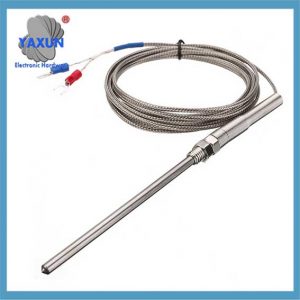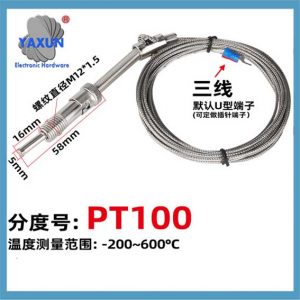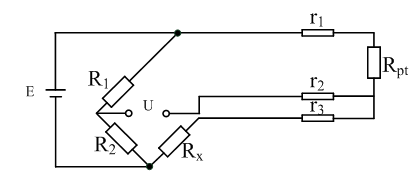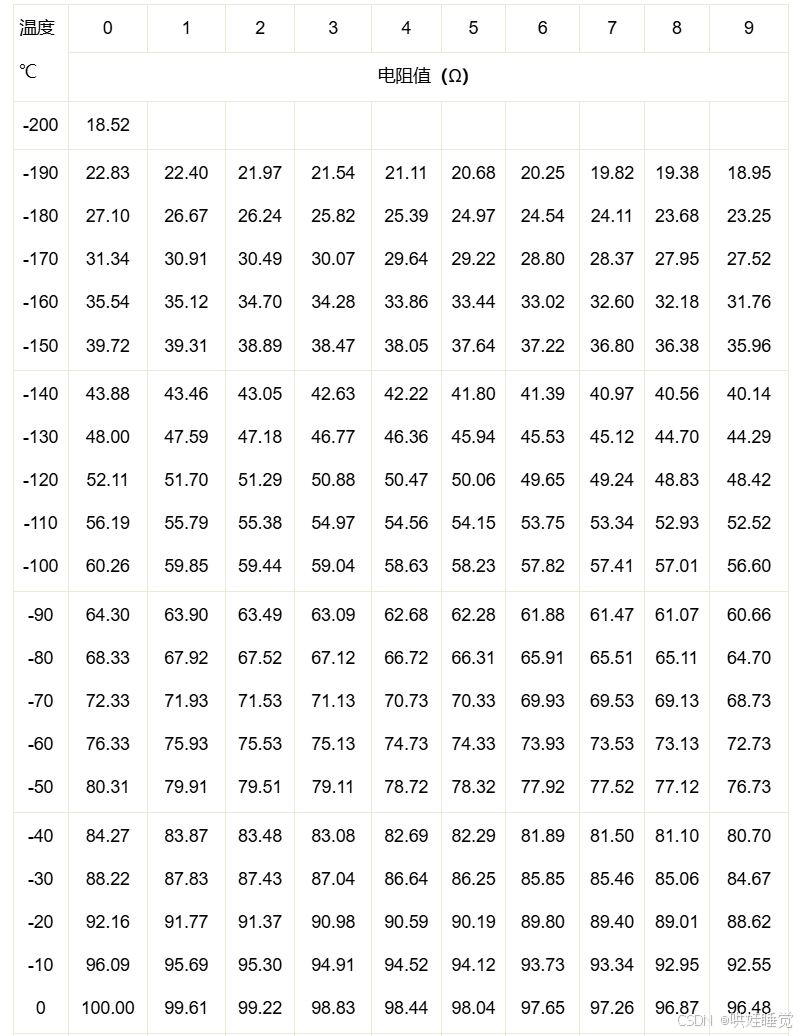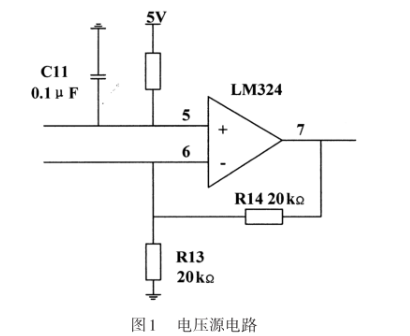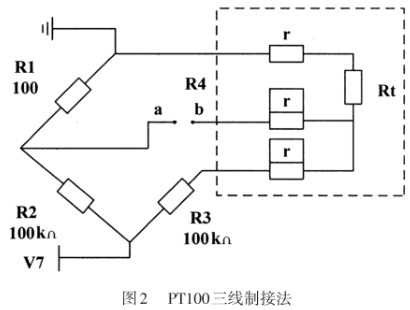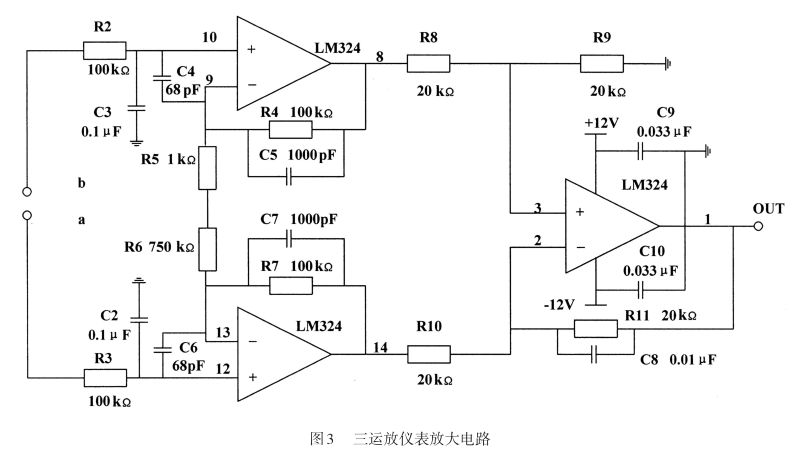2-wire, 3-wire or 4-wire Pt100, Pt500, Pt1000 sensors are temperature sensors based on platinum elements with high accuracy, stability and linearity, and are widely used in fields that require accurate temperature measurement. A “PT100 thermal resistor temperature measurement system” refers to a system that uses a PT100 sensor, a type of Resistance Temperature Detector (Rtd), to measure temperature by detecting changes in its electrical resistance which are directly proportional to the temperature; “PT” stands for Platinum, dan “100” indicates that the sensor has a resistance of 100 ohms at 0°C making it a highly accurate and stable method for temperature measurement across a wide range.
Perintang Platinum digunakan secara meluas dalam julat suhu sederhana (-200~ 650 ℃). Pada masa ini, Terdapat suhu standard mengukur perintang haba yang diperbuat daripada platinum logam di pasaran, seperti PT100, Pt500, PT1000, dll.
Memahami prinsip kerja PT100: PT100 adalah sensor suhu perintang PT. Prinsip kerja berdasarkan kesan haba perintang. Nilai rintangannya berubah dengan perubahan suhu. Perubahan ini linear. Pada 0 ℃, nilai rintangan pt100 adalah 100 ohm. Apabila suhu meningkat, Nilai rintangan juga meningkat dengan sewajarnya, Oleh itu, suhu dapat disimpulkan dengan tepat dengan mengukur nilai rintangan.
Pilih kaedah pendawaian yang sesuai: Secara amnya, 2-wire, 3-Kaedah pendawaian dawai atau 4-wayar boleh digunakan.
Perkara utama mengenai sistem PT100:
Prinsip Sensor:
Sensor pt100 diperbuat daripada dawai platinum yang rintangan elektriknya berubah dengan turun naik suhu.
Kaedah pengukuran:
Apabila arus dilalui melalui PT100, penurunan voltan merentasi sensor diukur, yang kemudiannya ditukar kepada suhu berdasarkan hubungan yang diketahui antara rintangan dan suhu.
Permohonan yang luas:
Sensor PT100 biasanya digunakan dalam proses perindustrian, makmal, dan aplikasi lain di mana pengukuran suhu yang tepat diperlukan kerana ketepatan dan kestabilan yang tinggi.
Komponen sistem PT100:
Probe sensor PT100:
Elemen penderiaan sebenar, Biasanya dawai platinum yang dibalut dengan teras seramik, yang dimasukkan ke dalam persekitaran untuk diukur.
Litar penyaman isyarat:
Elektronik yang menguatkan dan menukar perubahan rintangan kecil dari pt100 ke dalam isyarat voltan yang boleh diukur.
Sistem Paparan atau Perolehan Data:
Peranti yang memaparkan suhu yang diukur atau menyimpan data untuk analisis.
Faedah menggunakan sistem pt100:
Ketepatan yang tinggi: Dianggap sebagai salah satu sensor suhu yang paling tepat yang ada.
Julat suhu yang luas: Boleh mengukur suhu dari -200 ° C hingga 850 ° C bergantung kepada reka bentuk sensor.
Linearity yang baik: Hubungan antara rintangan dan suhu sangat linear, Membuat tafsiran data yang mudah.
Kestabilan: Platinum adalah bahan yang sangat stabil, memastikan bacaan yang konsisten dari masa ke masa.
Tiga kaedah pendawaian perintang platinum PT100 berbeza pada prinsip: 2-dawai dan wayar 3 diukur dengan kaedah jambatan, dan hubungan antara nilai suhu dan nilai output analog diberikan pada akhirnya. 4-Kawat tidak mempunyai jambatan. Ia sepenuhnya dihantar oleh sumber semasa yang berterusan, diukur oleh voltmeter, dan akhirnya memberikan nilai rintangan yang diukur, yang sukar dan mahal untuk digunakan.
Kerana PT100 mempunyai nilai rintangan kecil dan kepekaan yang tinggi, nilai rintangan wayar plumbum tidak dapat diabaikan. Penggunaan sambungan 3-wayar dapat menghapuskan ralat pengukuran yang disebabkan oleh rintangan garis utama.
Sistem 2-wayar mempunyai ketepatan pengukuran yang lemah; Sistem 3-wayar mempunyai ketepatan yang lebih baik; Sistem 4-wayar mempunyai ketepatan pengukuran yang tinggi, tetapi memerlukan lebih banyak wayar.
We only need to know the temperature state of PT100 based on the voltage signal output by the bridge. When the resistance value of PT100 is not equal to the resistance value of Rx, the bridge outputs a differential pressure signal, which is very small. Since the output signal of the temperature sensor is generally very weak, a signal conditioning and conversion circuit is required to amplify it or convert it into a form that is easy to transmit, process, record and display. The slight change in the measured signal quantity needs to be converted into an electrical signal. When amplifying the DC signal, the self-drift and unbalanced voltage of the op amp cannot be ignored when passing through the op amp. After amplification, a voltage signal of the desired size can be output.
The resistance value of the platinum resistor can be obtained by circuit calculation or multimeter measurement. When we know the resistance value of PT100, we can measure and calculate the temperature by the resistance value.
Use appropriate algorithms for data processing: Use the known temperature and resistance relationship to calculate the temperature through programming. Considering that the resistance-temperature relationship of PT100 is nonlinear, especially in low or high temperature areas, more complex algorithms may be needed to improve accuracy.
Impact of environmental factors: Performance may be affected by environmental factors such as electromagnetic interference, mechanical vibration, and humidity.
There are three common temperature measurement calculation methods:
Temperature measurement calculation method 1:
Apabila suhu yang tepat tidak diperlukan, Suhu akan meningkat sebanyak 2.5 ℃ untuk setiap kenaikan ohm dalam nilai rintangan perintang terma PT100 (digunakan pada suhu rendah). Nilai rintangan sensor suhu PT100 adalah 100 Bila 0 ℃, Jadi suhu anggaran pada masa ini = (Nilai rintangan PT100-100)*2.5.
Temperature measurement calculation method 2:
Hubungan antara nilai rintangan dan suhu perintang platinum
Dalam julat 0 ~ 850 ℃: RT = R0(1+AT+BT2);
Dalam julat -200 ~ 0 ℃: RT = R0[1+Pada+bt2+c(T-100)3];
RT mewakili nilai rintangan perintang platinum pada suhu T ℃;
R0 mewakili nilai rintangan perintang platinum pada suhu 0 ℃;
A, B, C adalah pemalar, A = 3.96847 × 10-3/℃; B = -5.847 × 10-7/℃; C = -4.22 × 10-12/℃;
Untuk perintang haba yang memenuhi hubungan di atas, Pekali suhunya adalah kira-kira 3.9 × 10-3/℃.
Melalui formula di atas, suhu dapat diselesaikan dengan tepat mengikut nilai rintangan, tetapi disebabkan oleh banyak pengiraan kaedah ini, Tidak disyorkan untuk percubaan ini.
Kaedah Pengiraan Suhu Tiga:
PT100 mempunyai hubungan linear yang baik dengan suhu dan sesuai untuk pengukuran suhu sederhana dan rendah. Nilai rintangan PT100 pada suhu yang berbeza mempunyai skala pengukuran satu sama lain seperti yang ditunjukkan dalam gambar di bawah, yang secara intuitif dapat memaparkan hubungan yang sama antara suhu yang berbeza dan nilai rintangan pt100.
The temperature can be known by checking the corresponding resistance value through the PT100 scale.
Pt100 thermal resistor scale
The PT100 temperature measuring device designed in this paper uses the commonly used low-cost four-way operational amplifier LM324 to complete the design of the device power supply circuit and three-op-amp instrument amplifier circuit.
1.1 Voltage source circuit
The circuit in Figure 1 is a common proportional operational circuit. According to the analysis of the ideal operational amplifier working in the linear region, according to the principle of virtual short and virtual break, it is obtained:
, then the closed-loop voltage amplification factor is 2 kali, and then V= 10V is obtained, and it is used as the stable power supply voltage of the Wheatstone bridge circuit.
1.2 Three-wire connection of Wheatstone bridge and PT100.
The above figure is a Wheatstone bridge. The condition for the bridge to be balanced is that the potentials of points B and D are equal. So when the bridge is balanced, as long as R1, R2 (usually fixed values) and R0 (usually adjustable values) are read, the resistance Rx to be measured can be obtained. R1/R2=M, called “multiplier”.
According to the PT100 temperature measurement principle, the resistance value of PT100 needs to be known correctly, but the resistance value cannot be measured directly, so a conversion circuit is required. The resistance value is converted into a voltage signal that can be detected by the microcontroller”. The Wheatstone bridge circuit is an instrument that can correctly measure resistance. As shown in Figure 2, R1, R2, R3, and R4 are its bridge arms respectively. When the bridge is balanced, R1xR3=R2xR4 is satisfied. When the bridge is unbalanced, there will be a voltage difference between points a and b. According to the voltage of points a and b, the corresponding resistance can be calculated. This is the principle of measuring resistance with an unbalanced bridge:
Sebenarnya, due to the small resistance and high sensitivity of PT100, the resistance of the lead wire will cause errors. Oleh itu, the three-wire connection method is often used in industry to eliminate this error. As shown in the dotted part of Figure 2, the lead wire resistance value is equal and is r. Pada masa ini, the bridge arms become R, R, R+2r, and Rt+2r. When the bridge is balanced: R2. (R1+2r) =R1.(R3+2r), sorted out: Rt= R1R3/ R2+2 R1r/ R2- 2r. Analysis shows that when R1=R2, the change in wire resistance has no effect on the measurement result.
1.3 Three-op-amp instrumentation amplifier circuit
When the temperature changes from 0℃~100℃, the resistance of PT100 changes approximately linearly in the range of 100Ω~138.51Ω. According to the above bridge circuit, the bridge is balanced at 0℃, so the theoretical value of the bridge output voltage should be 0 V, and when the temperature is 100℃, the bridge output is: Uab=U7x(R1/(R1+ R2)-R3/(R2 + R3)), itu, Uab=10x(138.51/(10000 + 138.51)-100/(10000 + 100)) =0.037599V. Since this is a millivolt signal, it is necessary to amplify this voltage to make it detectable by the AD chip.
As shown in Figure 3, the instrumentation amplifier is a device that amplifies small signals in a noisy environment. It has a series of advantages such as low drift, low power consumption, high common-mode rejection ratio, wide power supply range and small size. It uses the characteristics of differential small signals superimposed on larger common-mode signals, which can remove common-mode signals and amplify differential signals at the same time. The output voltage of the standard three-op-amp instrumentation amplifier circuit is, here R8=R10 =20 kΩ, R9=R11=20 kΩ, R4=R7=100kΩ, which can amplify the input voltage signal by about 150 kali, so that the theoretical output voltage of the bridge can be amplified to 0 ~2.34 V. But this is only a theoretical value. In the actual process, there are many factors that can cause resistance changes. Oleh itu, R3 can be replaced with a precision adjustable resistor to facilitate circuit zeroing.
2. Software Design
2.1 Least Squares Method and PT100 Linear Fitting
In the temperature range of 0℃≤t≤850℃, the relationship between Pt100 resistance and temperature is: R=100 (1 +AT+BT2), where A=3.90802x 10-3; B=- -5.80x 10-7; C=4.2735 x 10-12
It can be seen that the resistance of PT100 and temperature are not an absolute linear relationship but a parabola. Oleh itu, if t is to be extracted, a square root operation is required, which introduces a more complex function operation and occupies a large amount of CPU resources of the single-chip microcomputer. To solve this problem, we can use the least squares method to linearly fit the relationship between temperature and resistance. ” The least squares curve fitting is a common method for experimental data processing. Its principle is to find a polynomial function to minimize the sum of square errors with the original data.
2.2 AD digital conversion temperature
The PT100 temperature measurement principle is to obtain the temperature value based on its resistance value, so the resistance value of the thermal resistor must be determined first. According to the hardware circuit, the relationship between the output voltage Uab of the bridge circuit and the output voltage Uad of the op amp instrument amplifier circuit is: Uad=Uab. Auf Because the system uses a 12-bit AD chip, Hubungan antara kuantiti digital dan kuantiti analog adalah: UAD/AD = 5/4096. Hubungan antara voltan keluaran jambatan dan iklan kuantiti digital dapat diperoleh dengan menggabungkan dua persamaan sebelumnya, itu, Uad/ad = 5/(4096Pada). Kemudian, ia digantikan ke dalam ekspresi voltan keluaran jambatan uab = u7x (Rt/ (R1+RT) -R3/ (R2+R3) ), dan ungkapan RR dan AD kuantiti digital dapat diperoleh. Penyelesaiannya adalah:
Setelah mengetahui nilai rintangan PT100, Nilai suhu yang sepadan boleh diperolehi mengikut persamaan pemasangan linear di bahagian 2.1.
2.3 Penapisan digital tunggal-cip
Untuk meningkatkan ketepatan pengukuran suhu PT100, Program penapisan digital boleh ditambah dalam pengaturcaraan perisian, which does not require the addition of hardware circuits and can improve the stability and reliability of the system. There are many filtering methods in the single-chip microcomputer application system. When making a specific selection, the advantages and disadvantages of the filtering method and the applicable objects should be analyzed and compared, so as to select the appropriate filtering method. The algorithm of the median average filtering method is to first continuously collect N data, then remove a minimum value and a maximum value, and finally calculate the arithmetic mean of the remaining data. This filtering method is suitable for measuring parameters that change slowly, such as temperature, dan berkesan dapat mengurangkan gangguan yang disebabkan oleh turun naik yang disebabkan oleh faktor atau kesilapan yang tidak disengajakan yang disebabkan oleh ketidakstabilan sampler.
Proses kerja sistem:
Apabila suhu objek diukur perubahan, rintangan perubahan PT100, dan jambatan wheatstone akan mengeluarkan isyarat voltan yang sepadan. Isyarat ini adalah fungsi rintangan pt100. Isyarat millivolt ini dikuatkan oleh penguat instrumentasi tiga-op-amp dan dihantar ke cip iklan, yang menukarkan kuantiti analog menjadi kuantiti digital dan dibaca oleh mikropengong. Mikrokontroler membaca cip dari cip iklan dan melaksanakan program penapisan, Menukar kuantiti digital yang stabil ke dalam rintangan pt100 melalui pengiraan. Then the microcontroller will select the corresponding fitted linear model according to the size of the resistance value to calculate the current temperature value, and finally display the temperature data on the LCD display.
 English
English Afrikaans
Afrikaans العربية
العربية বাংলা
বাংলা bosanski jezik
bosanski jezik Български
Български Català
Català 粤语
粤语 中文(简体)
中文(简体) 中文(漢字)
中文(漢字) Hrvatski
Hrvatski Čeština
Čeština Nederlands
Nederlands Eesti keel
Eesti keel Suomi
Suomi Français
Français Deutsch
Deutsch Ελληνικά
Ελληνικά हिन्दी; हिंदी
हिन्दी; हिंदी Magyar
Magyar Bahasa Indonesia
Bahasa Indonesia Italiano
Italiano 日本語
日本語 한국어
한국어 Latviešu valoda
Latviešu valoda Lietuvių kalba
Lietuvių kalba македонски јазик
македонски јазик Bahasa Melayu
Bahasa Melayu Norsk
Norsk پارسی
پارسی Polski
Polski Português
Português Română
Română Русский
Русский Cрпски језик
Cрпски језик Slovenčina
Slovenčina Slovenščina
Slovenščina Español
Español Svenska
Svenska ภาษาไทย
ภาษาไทย Türkçe
Türkçe Українська
Українська اردو
اردو Tiếng Việt
Tiếng Việt


